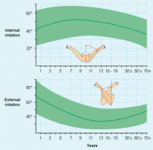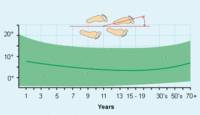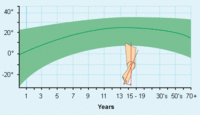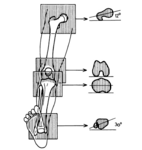Images and videos
Images
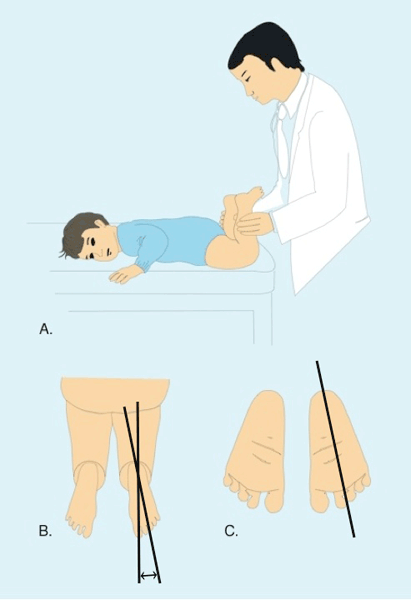
Torsion of the lower limb in children
A,B: Thigh-foot axis assessed in prone position by measuring the angle between the longitudinal axis of the thigh and of the foot. C: Sole shape should be evaluated for forefoot adduction and abduction abnormalities such as metatarsus adductus. Heel-bisector line (drawn through midline axis of hindfoot and forefoot), in a normal foot, passes through the second web space. Lateral border of the foot is normally straight
From the collection of Lynn T. Staheli, MD
See this image in context in the following section/s:
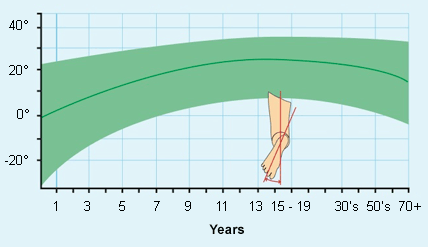
Torsion of the lower limb in children
Normal range and development of thigh-foot angle throughout childhood. Green: normal ranges, mean ± 2 standard deviations
From the collection of Lynn T. Staheli, MD
See this image in context in the following section/s:
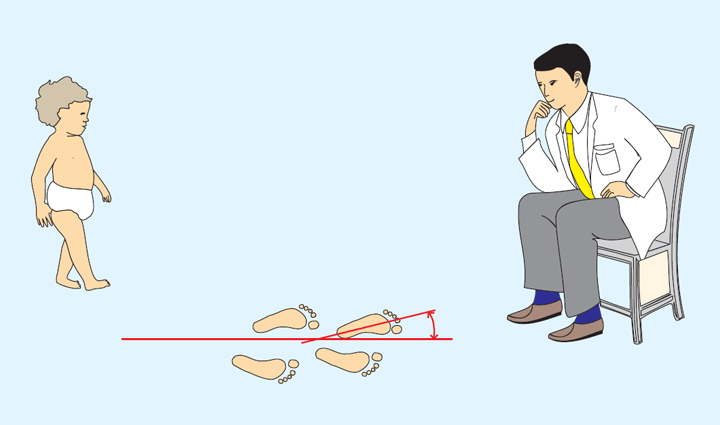
Torsion of the lower limb in children
Foot progression angle (FPA) assessed while watching the child walk. FPA is formed by a line drawn in direction of walking and a line from the longitudinal axis of the foot. FPA is summation of torsional alignments of femur, tibia, and foot. Intoeing is designated as a negative number and out-toeing a positive number
From the collection of Lynn T. Staheli, MD
See this image in context in the following section/s:
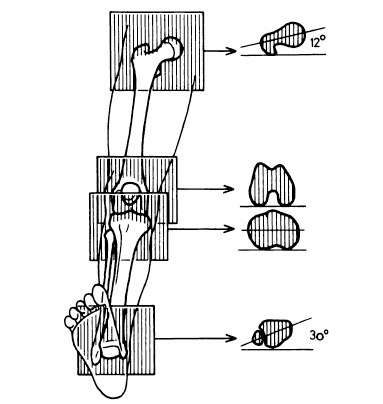
Torsion of the lower limb in children
Severe torsional deformities may be assessed with gunsight CT scan by measuring the angle between the transverse axes on CT cuts of the proximal and distal juxta-articular regions
© 1980 J Bone Joint Surg Br. Reprinted from: J Bone Joint Surg Br. 1980;62-B:238-242, with permission
See this image in context in the following section/s:
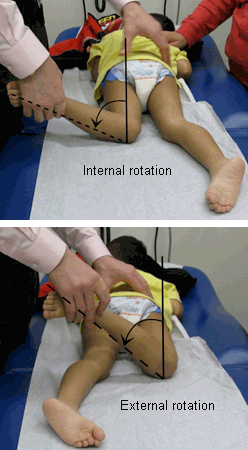
Torsion of the lower limb in children
Internal and external rotation of hip in extension is assessed with patient prone and knee flexed 90°
From the collection of Tamir Bloom, MD
See this image in context in the following section/s:
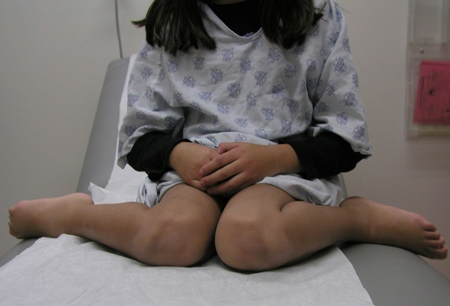
Torsion of the lower limb in children
Photo of a child sitting in the W position
From the collection of Tamir Bloom, MD
See this image in context in the following section/s:
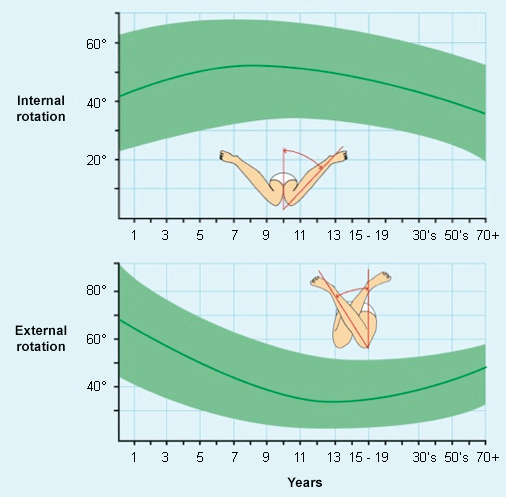
Torsion of the lower limb in children
Normal range and development of hip rotation throughout childhood. Green: normal ranges, mean ± 2 standard deviations
From the collection of Lynn T. Staheli, MD
See this image in context in the following section/s:

Torsion of the lower limb in children
Normal range and development of foot progression angle throughout childhood. Green: normal ranges, mean ± 2 standard deviations
From the collection of Lynn T. Staheli, MD
See this image in context in the following section/s:
Use of this content is subject to our disclaimer




